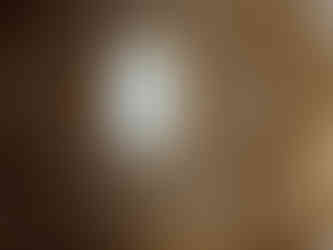Exploring the German Versailles
- Christy
- Jun 14, 2018
- 4 min read
Updated: Jun 15, 2018
Versailles is one of the most recognized palaces for its extravagance and avant garde style, but who ever knew Germany had its own Versailles as well!
Just about an hour’s drive outside of Berlin is a city called Potsdam. It is a small city but packs a strong punch with its gorgeous palaces and gardens. The Prussian King Frederick was the grand organizer of Potsdam and it was residence of Prussian kings and German Kaisers until 1918. The same family ruled for 500 years so there are palaces galore here!

Park Sanssouci is a collection of seven palaces and gardens which were started by Frederick the Great in 1745 and were expanded by his successors. Since Sanssouci Palace is at the heart of city, we spent most our time here.

Frederick the Great’s rococo Sanssouci summed up all the 18th century trends from around Europe. He had plenty of money and style and wanted to show off both by surrounding himself with the best artists and architects. The King of Prussia created this to be a palace of pleasure to be enjoyed with just his closest friends. Sanssouci is literally translated to mean “without any worries” -- free of politics, concerns, and his wife the queen (he didn’t care for her much). This “Prussian Versailles” was for use in the summer months. Why, you might ask. I don’t know but maybe they just loved the summer months in the country.
As you drive through Potsdam approaching Sanssouci, you see a group of plain wooden houses called the Russian houses. The King built the houses for the musicians he had perform at the Palace, so he would always have them available. You will see later how important music was to him and that is what you can do when you are a powerful king!
Sanssouci summer palace was built so the king could have beautiful gardens along with his pleasure palace. And on top of that, he also had the palace built above a terraced vineyard. He even brought in vines from Portugal, Italy, and France as he thought this represented harmony between man and nature (and I’m pretty sure there was some excellent wine that went into that too).

The main entrance definitely was not what I expected. I thought, like Versailles, it would be open and decadent, but instead, it was through a narrow hallway, as it was actually part of the servant’s area of the palace. However, there was a painting on the ceiling of a goddess welcoming all visitors to the Palace.
After you walk through the narrow hall, it opens up in to another hall, Marble Hall, and at the top is a beautiful gold cupola – representing eternity and a pathway to the sky (he was entitled to do this after all, being the King). The beautiful columns were made from Carrara Marble designed to look like the Pantheon in Rome and the beautiful original floor is made from various types of Italian marble.
The Concert Hall (Music Theater) was another important room for the King to entertain his friends – remember, music was very important to him. An impressive feature to this area is the stunning crystal chandelier. At night, this crystal pieces reflected in the mirror and rays would dance on the walls as the music was playing. Wouldn’t that be something to watch back then?

The King’s Room was impressive mostly because the furniture is all original – including his personal desk and chair. The large object in front of the fire screen was interesting and struck me as being majestic too.


One of the most important rooms was called the “Flower Room” or Voltaire Room since it was frequented on many occasions by the famous philosopher. The 3-D details are amazing in this room! The exquisite chandelier is made out of handmade porcelain flowers (this was probably my favorite room).
When we exited the palace in to the gardens, it reminded me a lot of Versailles, and for a very good reason. The garden layout was actually copied from Versailles, including the fountain and marble statues that are scattered throughout. All elements of nature were represented: Fire, water, air, and earth. What is important to remember is this garden is not natural but designed and placed by man. He wanted to prove that he was above nature like the French King at Versailles.
The King’s grave is simple and located above the garden,but comes with a great story. It took more than 250 years for King Fredrick’s final request to come true. His nephew had ignored his original request to be buried by his beloved dogs -- remember he wasn’t particularly fond of his wife (also note, he named his dogs after the King of France’s mistresses to do a little dig to his fellow monarch). But, finally after reunification in 1991, his grave was moved to the spot he had requested so many years before. Fun fact: We were told he introduced potatoes to Germany (or at least made them a staple for the country) and so people still put potatoes on his grave.

Important to note that admission to Sanssouci Palace is limited and to a timed ticket only which is nice because you can get nice pictures without a mob around. Book ahead online or go with a tour to get the full experience. The price for Sanssouci Palace is 12 Euros (plus a 3 Euro fee to allow you to take photos inside the palaces). BEST deal: You may purchase a combined ticket for 19 Euros which is valid for all palaces in Potsdam which are open, including a set admission time for Sanssouci Palace. You will not be disappointed by taking a short drive out of Berlin for these amazing palaces!





















Comments